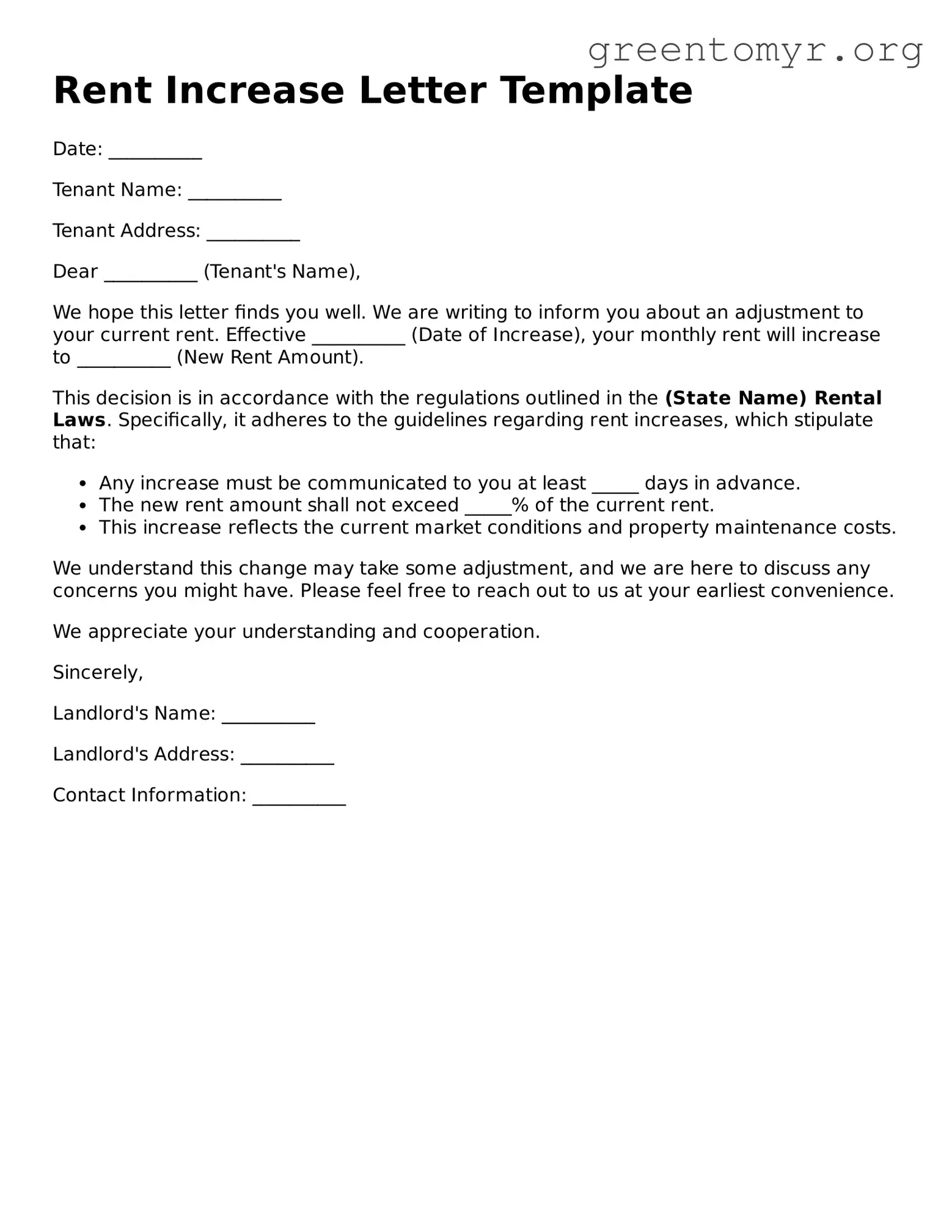Rent Increase Letter Template
Date: __________
Tenant Name: __________
Tenant Address: __________
Dear __________ (Tenant's Name),
We hope this letter finds you well. We are writing to inform you about an adjustment to your current rent. Effective __________ (Date of Increase), your monthly rent will increase to __________ (New Rent Amount).
This decision is in accordance with the regulations outlined in the (State Name) Rental Laws. Specifically, it adheres to the guidelines regarding rent increases, which stipulate that:
- Any increase must be communicated to you at least _____ days in advance.
- The new rent amount shall not exceed _____% of the current rent.
- This increase reflects the current market conditions and property maintenance costs.
We understand this change may take some adjustment, and we are here to discuss any concerns you might have. Please feel free to reach out to us at your earliest convenience.
We appreciate your understanding and cooperation.
Sincerely,
Landlord's Name: __________
Landlord's Address: __________
Contact Information: __________
